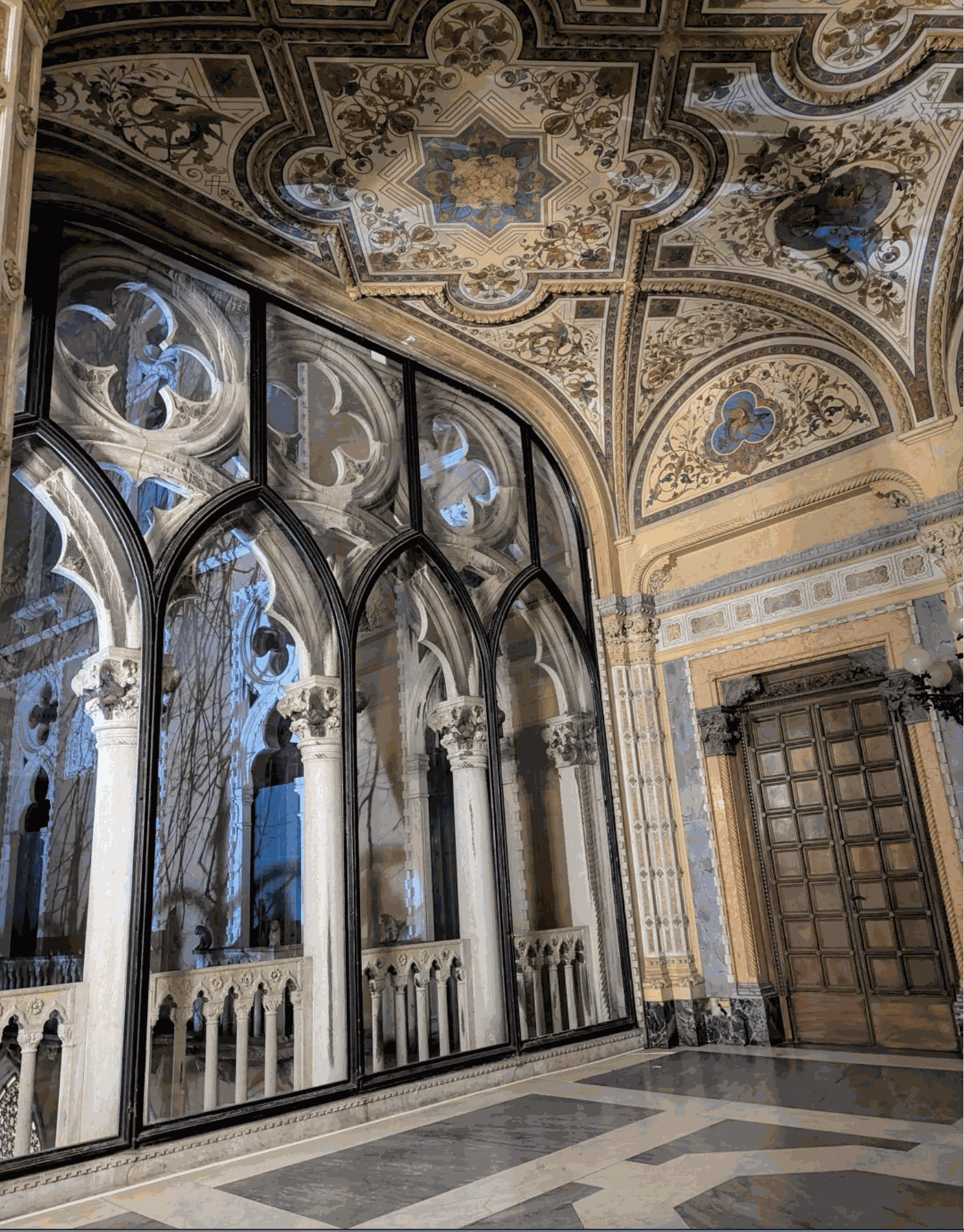Mattia Moreni: "Objects and Things think in silence".

Fitting perfectly into the theme of the 19th International Architecture Exhibition focused on different types of intelligence, including artificial intelligence, the visionary, nonconformist, impetuous and volcanic art of Mattia Moreni arrives at ACP - Palazzo Franchetti by Fondazione Calarota, in the fascinating spaces of the Second Piano Nobile, with a major exhibition curated by Roberta Perazzini Calarota consisting of a selection of more than 30 works, many of which are large format. The paintings on display retrace the artist's tireless research, starting from the cubist experiments of the 1950s, passing through the great informal season and the characteristic "Watermelons", a cycle with which he presented himself in the personal room at the Venice Biennale dedicated to him in 1972, to then focus with an extended study on the last phase of his production, dedicated to the "Humanoids". It is with these works that the artist, already starting from the 1980s, carries forward with great lucidity and intuition a reflection on the impact of technology and information technology - called electronics in the language of the time - in our daily life and in artistic practice, which not only anticipates the current debate on artificial intelligence, but also makes his work the first to confront the innovation of our days. A cycle that consecrates Moreni as an authentic precursor, who was able to understand well in advance the direction, not at all obvious at the time, in which our society would move at great speed in the following decades. "Far from the useless academicisms that await even the most daring, Moreni lives intensely what is, for him, the pictorial adventure; and never was the term adventure more pertinent. His work questions, and thus places itself to an effective test, at the only possible level of the current human condition." writes Michel Tapié, in the catalogue of the XXX International Venice Biennale 1960, at the 103rd. The exhibition at ACP - Palazzo Franchetti highlights some of the fundamental turning points of this 'adventure', offering the opportunity to admire masterpieces of the artist's production such as "To all the world's maladroit: Amitié" (1960), presented at the Venice Biennale of the very same year Tapié writes about in the quote above, and the first painting in which written word appears in the pictorial composition. From here begins the practice, so typical of Moreni, of combining painting with the writing of words directly on the canvas to suggest his acute reflections with even more force.
From this path emerges the topicality of Moreni's research. "Objects and things think in silence" is not a quote from a text on artificial intelligence written in recent years but is the title of one of the chapters that make up "L'assurdo razionale perché necessario", the second volume containing the artist's monologues published in 1989 and which follows the collection "L'ignoranza fluida" of 1979. The exhibition devotes much attention to the last phase of the artist's production centered on the theme of the decadence of contemporary society, on which he reflects starting from the cycle of the Watermelons, declined both as a regression of the species in the dialectic man-computer, and as a regression of painting itself.
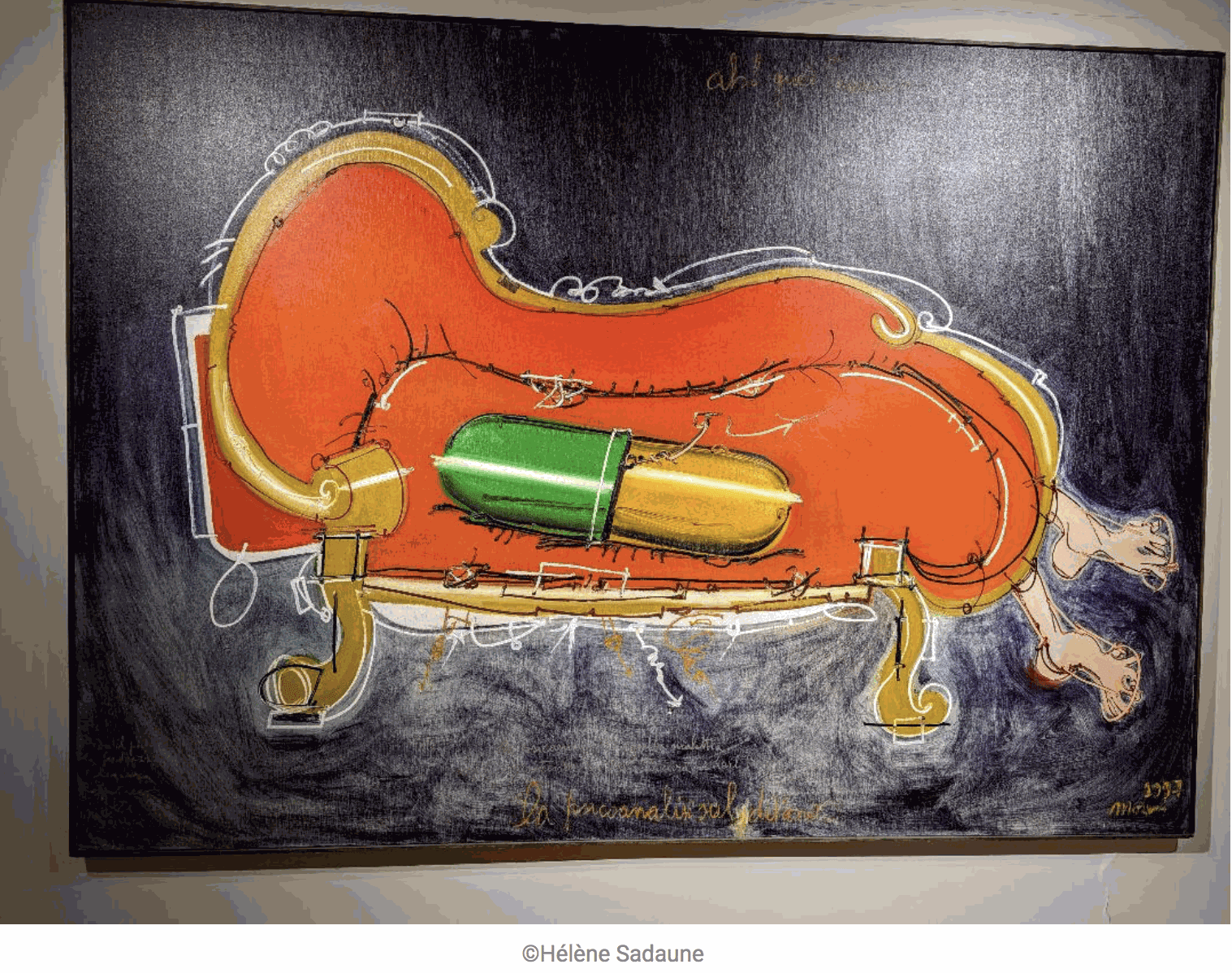
The artist becomes the spokesperson of one of the most aware and explicit denunciations of an impending "regressed" destiny and of the threats that computerized civilization would have brought with it, from which even art would not have remained immune. In the painting "Humanoid all computer vla internet..." (1996) we read: 'Advancing electronics / will prevent us from recognizing / the aforementioned artists who will work / with computers with another mind for / another way of looking: the revolution / of life without ideals'. WHY / ?"
Really timely reflections, capable of making us read our present and our daily lives from the privileged point of view of an artist who has shown himself to have very fine antennae to interpret the historical significance of the revolution that in his years was only in its infancy. Mattia Moreni was born in Pavia on November 12nd, 1920. He studied at the Accademia Albertina in Turin, and it is in the Piedmontese capital that his first solo exhibition was organized at the Galleria La Bussola in 1946. The exhibition inaugurated a fortunate exhibition story, which developed at a national level already in the years immediately following. In 1948 the artist participated in both the Rome Quadrenniale and the Venice Bienniale, where he would return to exhibit several times during the course of his career. Between the beginning of the 1950s and the mid-1960s, Moreni's international success was played out.
Really timely reflections, capable of making us read our present and our daily lives from the privileged point of view of an artist who has shown himself to have very fine antennae to interpret the historical significance of the revolution that in his years was only in its infancy. Mattia Moreni was born in Pavia on November 12nd, 1920. He studied at the Accademia Albertina in Turin, and it is in the Piedmontese capital that his first solo exhibition was organized at the Galleria La Bussola in 1946. The exhibition inaugurated a fortunate exhibition story, which developed at a national level already in the years immediately following. In 1948 the artist participated in both the Rome Quadrenniale and the Venice Bienniale, where he would return to exhibit several times during the course of his career. Between the beginning of the 1950s and the mid-1960s, Moreni's international success was played out.
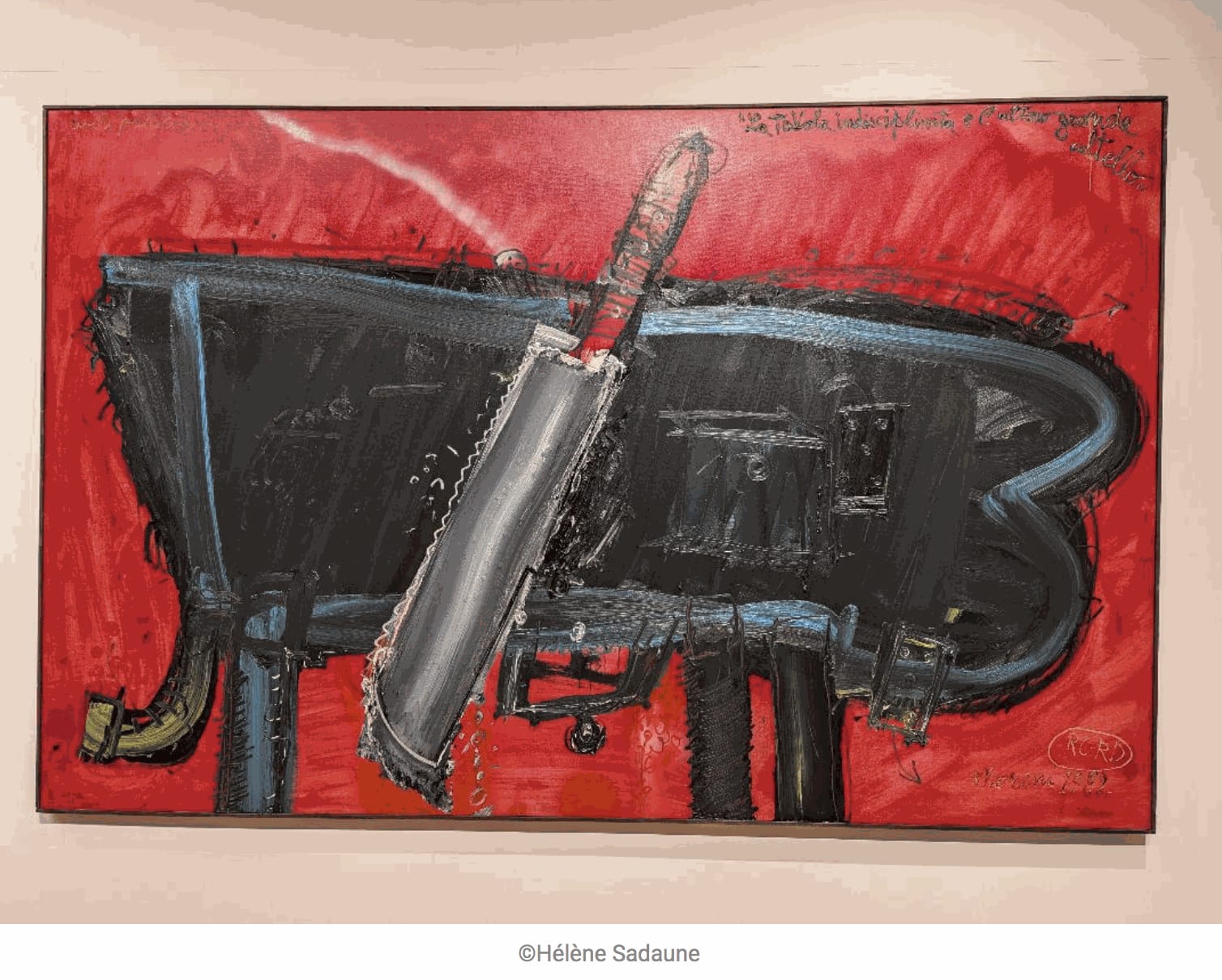
Crucial was his membership, in 1952, in the Group of Eight, which also included Afro, Renato Birolli, Antonio Corpora, Ennio Morlotti, Giuseppe Santomaso, Giulio Turcato and Emilio Vedova. Together with them he took part in the Biennale of that same year, and then in the traveling exhibition of 1953, organized by the theoretician of the group Lionello Venturi, which touched Hannover, Cologne and Berlin. At the same time, he continued his successful individual exhibition activity, participating in important international exhibitions, such as the Biennale of São Paulo in Brazil (1954) and Documenta in Kassel (1955).
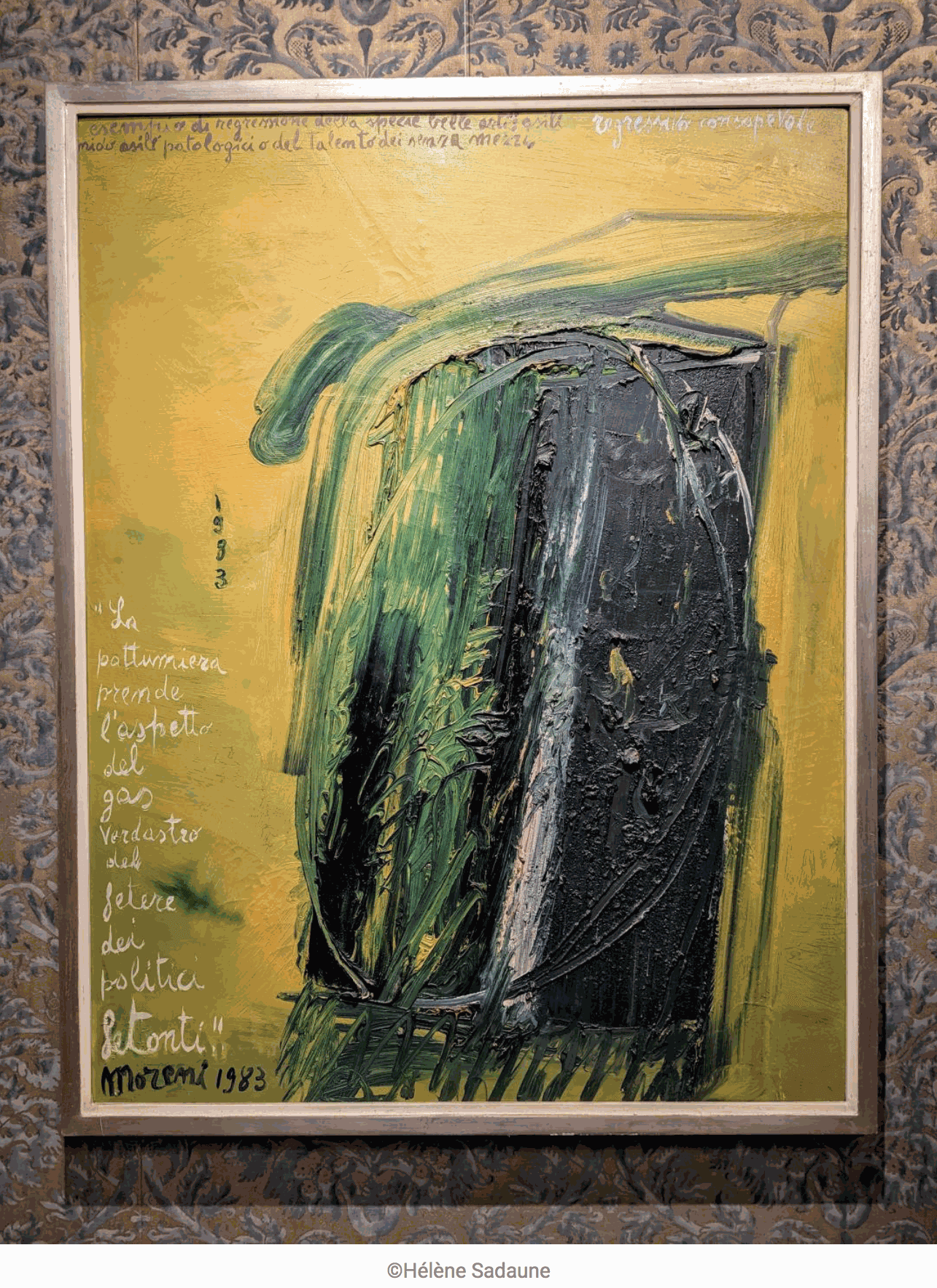
Following Michel Tapié's advice, in 1956 he moved to Paris and remained there for a decade. It is here that Tapié invites him to exhibit alongside the Informels artists - including Burri, De Kooning, Dubuffet, Fautrier, Pollock and Tobey - and then to present his first solo exhibition in Paris, in 1957. His solo exhibitions follow one another throughout the decade, both in Italy - Milan (1961); Turin, Genoa, Bologna, Rome (1962) - and abroad - London, Paris (1960), Cologne (1961), Basel (1962), Vienna (1963). Particularly important is the first retrospective at the Kunstverein in Hamburg (1964). After closing the Parisian parenthesis, Moreni settles with his wife in the "Calbane Vecchie", near the Romagna town of Brisighella, choosing to isolate himself from formal relationships and the artistic world, but continuing an intense production of works. It is in this place, so dear to the artist, that Moreni passed away on May 29th, 1999.
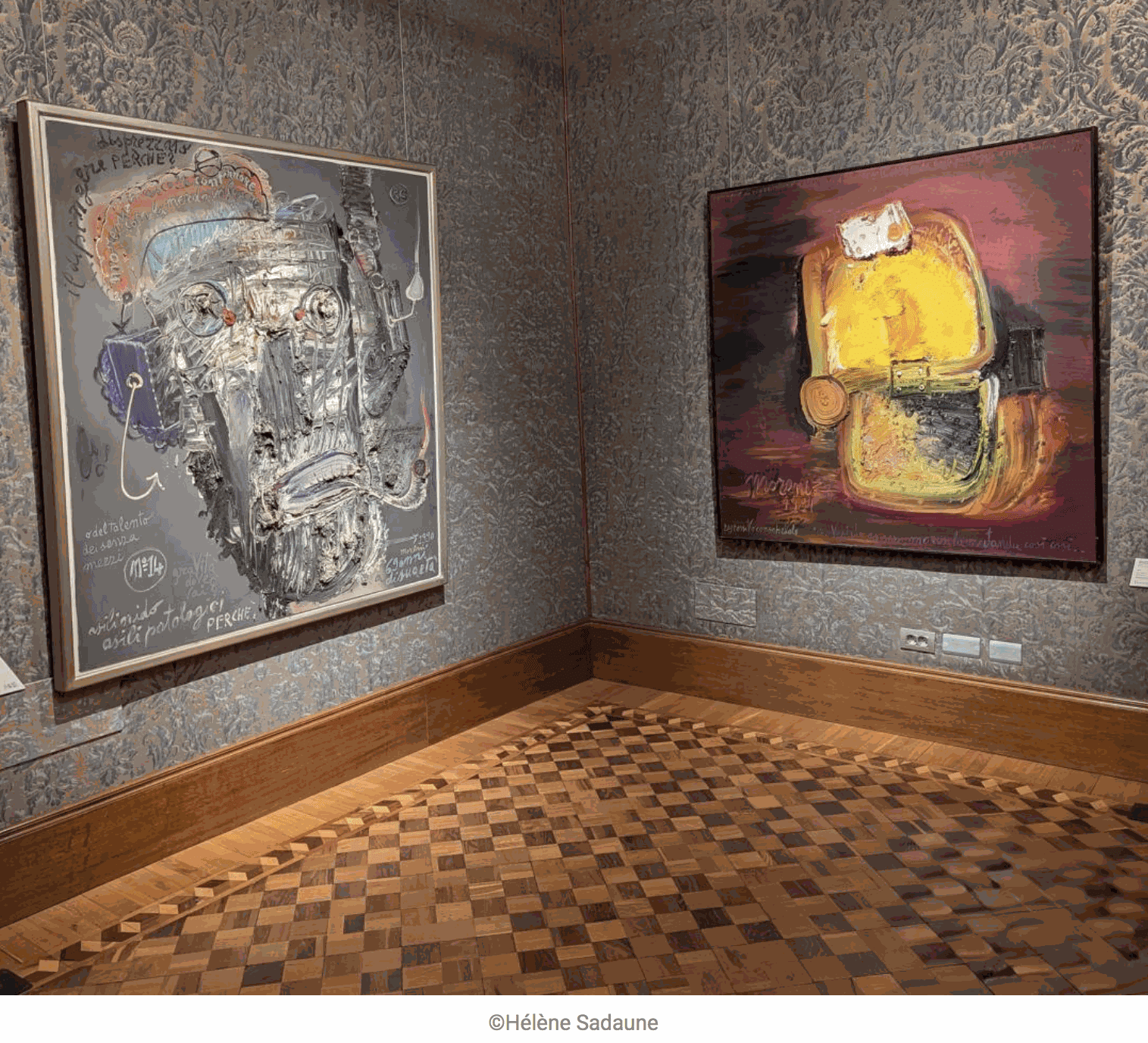
Graham Sutherland: Bittersweet.

Defined as the Damien Hirst of his time, Palazzo Franchetti by Fondazione Calarota hosts, with the patronage of the British Embassy in Rome, the exhibition dedicated to Graham Sutherland, one of the greatest innovators of contemporary British painting. Curated by Roberta Perazzini Calarota, the exhibition investigates some of the artist's most cherished themes - nature with its landscapes immersed in greenery and the animal world - through a core of important oil and watercolor works and a careful selection of lithographs belonging to the artist's most famous cycles, among which the famous "The Bestiary" stands out. Always balanced between real and imaginary, Sutherland's mysterious creations move alongside surrealism and immerse us in a "magical unease", to use Francesco Arcangeli's words, characterized by allusive metamorphoses and the tension of opposing forces that, in their always unstable balance, give life to a "mystery" of which we will never know the conclusion. Graham Sutherland (London, 1903 - 1980) stands out for his entirely personal contribution to the reinterpretation of the historical avant-gardes of the early twentieth century and for the variety of mediums used, including oils, watercolors and lithographs, but also costumes and sets for theatrical performances.
His art presents expressionist, cubist, surrealist and abstract characteristics, which come together in a completely original mix. The result is a figuration based on a sophisticated deconstruction of forms then recomposed in a new, visionary, and bittersweet reality, captured in its incessant flow and in the precarious tension of opposites: happiness and sadness, joy and horror, nature and introspection. The naturalistic impressions coexist with an existential dimension that cannot ignore the contemporary political scene tragically marked by the Second World War.
The works on display reveal the ever-increasing emotional intensity that the artist is experiencing, after an initial part of his career devoted essentially to idyllic neo-romantic landscapes and the strong influence of artists such as Samuel Palmer and William Blake. The majority of the selected works are therefore significant examples of the mastery of Sutherland's mature style - from Twisted Tree (1973) to Road With Setting Sun (1977) - which also benefits from a new approach to colour resulting from the increasing time that Sutherland spent in the south of France, but also in Wales and Venice.
His art presents expressionist, cubist, surrealist and abstract characteristics, which come together in a completely original mix. The result is a figuration based on a sophisticated deconstruction of forms then recomposed in a new, visionary, and bittersweet reality, captured in its incessant flow and in the precarious tension of opposites: happiness and sadness, joy and horror, nature and introspection. The naturalistic impressions coexist with an existential dimension that cannot ignore the contemporary political scene tragically marked by the Second World War.
The works on display reveal the ever-increasing emotional intensity that the artist is experiencing, after an initial part of his career devoted essentially to idyllic neo-romantic landscapes and the strong influence of artists such as Samuel Palmer and William Blake. The majority of the selected works are therefore significant examples of the mastery of Sutherland's mature style - from Twisted Tree (1973) to Road With Setting Sun (1977) - which also benefits from a new approach to colour resulting from the increasing time that Sutherland spent in the south of France, but also in Wales and Venice.
Part of the exhibition will be dedicated to the art of engraving, a technique that the artist is particularly fond of and that he learned at Goldsmiths College and then taught at the Chelsea College of Art and Design. The exhibition is a precious opportunity to admire one of the most famous cycles created by the artist: "The Bestiary", presented in its entirety in the exhibition. The artist made prints for two different bestiaries, in 1968 and 1979 to accompany Apollinaire's poetic compositions on animals. In these works we can verify Arcangeli's thesis according to which the formal reform that Sutherland pursues is linked to his search for an escape route from anguish. By the artist's own admission, it is only by "paraphrasing" the world in his works that he is able to express what he feels about reality. Graham Sutherland is a widely institutionalized artist. International fame came while the artist was still alive: in 1946 he exhibited for the first time in New York at Curt Valentin's Buchholz Gallery. In 1948 he exhibited at the Hannover Gallery in London and at the Buchholz Gallery in New York. In 1952, on the occasion of his solo exhibition at the Blennale in Venice, he visited Italy and the exhibition, expanded to a retrospective, was presented in the same year at the Musée National d'Art Moderne in Paris. Another retrospective of his work, organized by the Arts Council of Great Britain in 1953, was set up at the Stedelijk Museum in Amsterdam, at the Kunsthaus Zurich and at the Tate Gallery in London. In 1959 he held a solo exhibition in New York, organized by Paul Rosenberg and Co. Other exhibitions were set up in 1966 at the Marlborough Fine Art in London and in 1967 at the Wallraf-Richartz-Museum in Cologne and at the Gemeentemuseum in The Hague. Among the most important posthumous exhibitions, we must certainly remember the one at the Tate Gallery in 1982 and at the Dulwich Picture Gallery in 2005.
